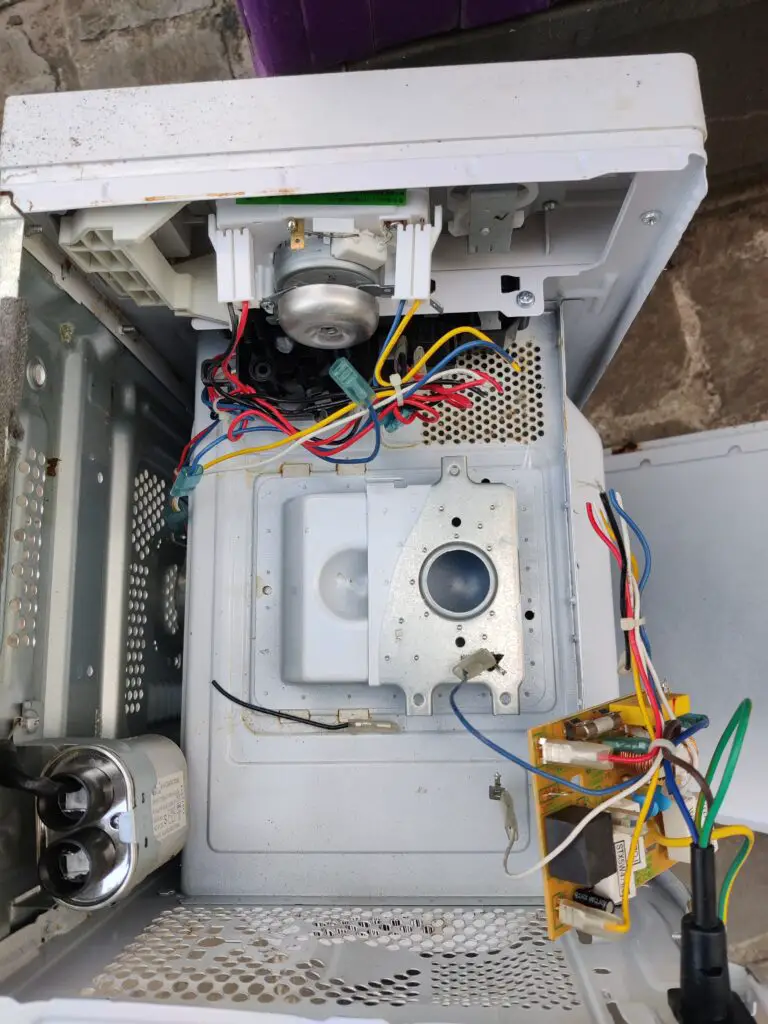Like many great inventions, the microwave oven was discovered accidentally in the 1950s by an electric engineer.
At first, people thought that food cooked in microwave ovens was unhealthy. It wasn’t until years later that people accepted this new invention in their households.
[ez-toc]
Since its spread in the US during the 1970s, the microwave oven has been a game-changer. It’s hard nowadays to find a home without a microwave oven. It makes cooking so much easier!
Now, you’re probably wondering, “How does a microwave oven work, exactly? How does it differ from a conventional oven?” Stick around to find out.
How Do Microwave Ovens Work?
Inside the microwave oven, there’s a tube called a magnetron. Magnetrons produce microwaves that reflect within the metal interior of the oven to be absorbed by the food.
Microwaves heat food by radiation. The microwaves created by a microwave oven are long and invisible. The water particles in the food absorb these microwaves, then they vibrate, producing heat for cooking.
To put it simply, the microwave oven works by turning electricity into heat.
How Does a Microwave Oven Convert Electricity to Heat?
Here’s how a microwave oven converts electricity to heat:
- The magnetron inside the oven converts the electricity from the outlet into high-powered radio waves that are about 4.7 inches long.
- The magnetron sends these waves through a channel called the waveguide and into the food compartment.
- The turntable spins slowly round so the waves are distributed evenly.
- The microwaves reflect back and forth against the metal walls of the food compartment.
- When the waves reach the food, they get absorbed.
- Absorbing the waves makes the food molecules vibrate.
- Vibrating molecules are heated. The faster the vibration is, the hotter the food gets.
What Are the Main Components of a Microwave Oven?
Microwave ovens are quite sophisticated, housing a bunch of different components, the most notable of which are:
- High Voltage Transformer
Microwave ovens require more power than the normal voltage carried by the home’s electrical wiring. This is why there’s a high voltage transformer in the microwave oven to turn the regular 240 V into thousands to be fed to the cavity magnetron.
- Cavity Magnetron
The magnetron is the most important part of the microwave oven. It’s a high-powered vacuum tube that converts electrical energy into microwave radiation.
- Microcontroller
A microcontroller is a controlling unit that allows communication between the microwave oven and its user.

It has one or more processing cores, memory, and programmable input/output peripherals. Its task is to process your instructions and display them on the screen.
- Wave Guide
This is a hollow metallic tube that drives the generated waves towards the food compartment.
- Cooling Fan
The function of the cooling fan is to reduce the temperature from the magnetron’s operation. It ensures the longevity and effectiveness of your microwave oven.
Difference Between Conventional and Microwave Ovens
If we say that a microwave oven is faster than a conventional oven, we’ll be stating the obvious, but let’s see why this is.
The heat from a conventional oven slowly cooks food from the outside in. A microwave oven, on the other hand, uses radio waves to cook food more evenly, which is a much faster functionality.
Another important aspect is that when using a microwave oven, you won’t need to wait for it to head up. It can cook at full capacity as soon as it’s turned on. This saves both time and energy.
Are Microwave Ovens usable for everything?
It is important to note though that some foods can’t be cooked in a microwave. Eggs, for example, will create a mess when you want to heat them in the microwave. It can be annoying to clean this up as it can splatter all over your microwave or house! Check the manual of your device to see what type of foods can be heated and what not. This will make your microwave last longer. Also, make sure to clean it thoroughly.
Some plastics can’t withstand the heat so be careful with them. Often it is indicated on the packaging if they can be used in the microwave or not. Items that can’t handle heat well, shouldn’t be placed in a microwave. Be sure to check when in doubt.
Widespread Myths About Microwave Ovens
Before we put a period on this article, we feel the need to address some of the myths floating around regarding the use of microwave ovens.
Here are the three most widespread myths about microwave ovens:
- Microwave Ovens Make Food Radioactive
Microwave ovens indeed emit radiation, but not all radiation is harmful.
There are two differences between harmful and safe radiation: wavelength and ionization. The waves emitted by microwave ovens are long with low frequency, which makes them safe.
Ionizing radiation can destroy atoms, while non-ionizing radiation simply causes vibration. The latter is what happens in a microwave oven.
- Microwave Ovens Reduce the the quality of the Food
The truth is that all cooking reduces the quality of the food. Heat causes the evaporation of water, which takes some elements with it.
However, the microwave oven’s effect on the food isn’t strong enough to make a real difference in terms of reduction.
Bottom Line
Microwave ovens are faster and a lot more efficient than conventional ovens. This is due to the different mechanisms of both.
Microwave ovens cook food by transforming electrical energy into heat. The heat causes the vibration of the water content in food and is, then, transferred through friction.
Microwave ovens are perfectly safe. However, you shouldn’t get exposed to the radiation from the microwave in any way. When there’s a leakage or a broken door, don’t use the microwave oven.
The main components of the microwave are the cooling fan, the magnetron, the waveguide, the high-voltage transformer, and the microcontroller.
